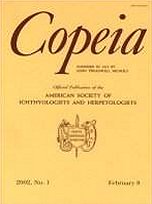ARTICLES (14)
BOOK REVIEWS (7)
BOOKS RECEIVED (1)

Geographic Variation in pH Tolerance of Two Populations of the European Common Frog, Rana temporaria
No abstract available
No abstract available
No abstract available
No abstract available
No abstract available
No abstract available
No abstract available
No abstract available
No abstract available
No abstract available
